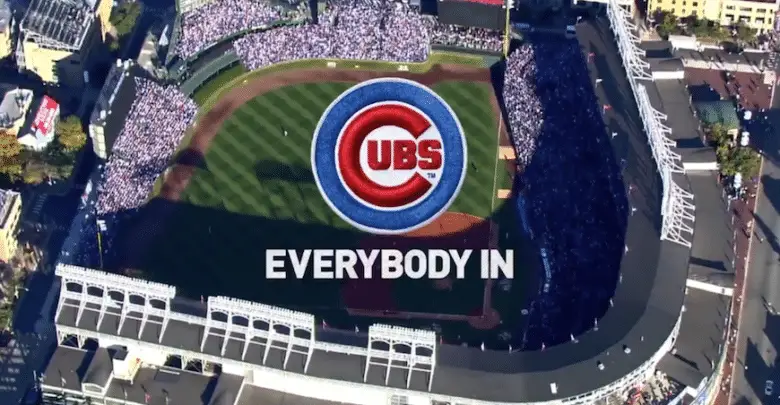
Renovation Budget Overage, Federal Probe into Wrigley’s ADA Compliance Create Poor Optics for Cubs
Anyone who’s engaged in a construction project of any size is well aware that costs can easily run over the initial budget. Heck, just painting my daughter’s room had me buying more than I needed in the first place, then running back to the hardware store for more. And in a completely predictable turn of events, I’ve still got more touch-up work to do. I might also have googled “getting paint out of carpet.”
The five year undertaking to transform Wrigleyville into Rickettsworld was slightly more extensive and only a little more expensive, but there was some paint involved. And I don’t just mean the smear campaigns against local politicians. Between the massive renovations to make Wrigley Field itself viable for another several decades and the sweeping construction projects around the ballpark, not to mention the purchases of several rooftop buildings, the original $500 million-ish budget got tossed out the window.
As Tom Ricketts recently shared with Sports Business Journal, they overshot their initial target “by around 100%” when it was all said and done. I don’t care how pragmatic you are or what you know about the way a professional sports organization operates, it’s not a great look to talk about the dangers of paying $10-15 million in luxury taxes when you’re admitting to burning through half a billion more than expected on a construction project.
Cubs Chairman Tom Ricketts, on the cost of Wrigley Field renovations: “We probably missed our budget by around 100%.” #SBJDEALMAKERS pic.twitter.com/NmYZ89gPih
— Sports Business Journal (@SBJ) December 4, 2019
Even though the money for the renovations came from the Ricketts-owned Hickory Street Capital, and thus would never have been allocated to the baseball ops budget, the top line is the same. Or at least that’s the case in a macro sense. So, again, it’s not easy for everyone to swallow when they hear what seems to be a mixed message. It’s like a guy pulling up to Goodwill in a Bentley and then checking price tags on old t-shirts.
Further skewing the optics is the federal investigation into the true meaning of “Everybody In,” or whether the massive renovation project meets accessibility requirements. The Americans with Disabilities Act implemented standards that require wheelchair seating that is “substantially equivalent to, or better than, the choices of seating locations and viewing angles available to other spectators.” Wrigley hadn’t previously been bound by those requirements, which went into effect in 2010, but the upgrades to the ballpark nullified the park’s exempt status.
Per the Chicago Tribune, the federal probe was prompted by an ongoing 2017 lawsuit filed by Chicago attorney and Cubs fan David A. Cerda on behalf of his son. The suit alleges that the renovations have resulted in too few accessible seats, with those that are available improperly spread throughout the park. The Cerdas’ preferred location in the past was 15 rows behind home plate, but those and other accessible seats have been displaced by the new construction.
The Cubs maintain that they will have more accessible seats than before, including the addition of 40 in the upper deck, but plans to add those are on hold pending the investigation. That seems like something they’d want to keep moving forward with as a gesture of good faith, but what do I know? In a letter to the judge overseeing the case, an attorney for the Cubs wrote that ADA compliance “is of critical importance to the Cubs, as is ensuring the accessibility to all fans to Wrigley Field, a historic and aging ballpark with a limited physical footprint.”
I can’t speak from personal experience, but it does appear on the surface as though the Cubs have improved the physical aspects of the ballpark when it comes to accommodating disabled fans. The limited fan feedback I’ve gotten indicates the same, though I’m not so naive to think I’ve gotten a comprehensive snapshot of every single fan impacted by these updates.
my cousin is in a wheelchair and i’ve been to games with her before and after the renovation…it’s light years better now than it was before. many more seat choices, elevators are better…not sure what neg experience this person had but can’t imagine this case has merit.
— Joe DiMaria (@DiMaria05) December 6, 2019
Rather than offer a definitive statement on the propriety of the Ricketts’ spending or the resultant product, I’ll simply say it’s another in a long line of not-great looks for the organization. Like when they battled publicly with rooftop owners. Or when they partnered with Sinclair Broadcasting on Marquee Sports Network. Or when they dragged alderman Tom Tunney during a CubsCon panel and on 670 The Score.
Not everyone finds these things objectionable, either because of personal political leanings or agnosticism toward anything that takes place beyond Wrigley’s playing surface. And I get that, I really do. While I may not agree with it, I understand that we all see things differently based on our preconceptions. But what many of us see is an organization that just keeps stepping in it at every turn when it comes to PR. It’s almost as if they don’t see what’s right in front of their face because they’re too busy patting themselves on the back, or [insert different metaphor tying hubris to a lack of foresight].
As with all the other missteps that have come before, these latest issues will almost certainly come out in the wash of a 24-news cycle that will soon include MLB’s Winter Meetings. Sign a player or two, then sign a check to make the lawsuit go away. Scrub hands, rinse, repeat.

